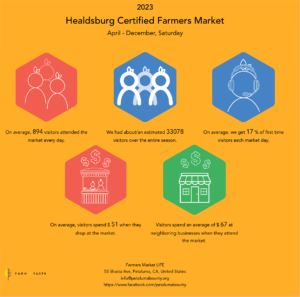Collect, Analyze and Report on data in 3 simple steps
Empower your market or market organization by working with Farm2Facts (F2F), a farmers-market data collection toolkit backed by the University of Wisconsin-Madison.
Whether you know it or not, you’re already collecting data through your usual market activities; let us assist with aggregating, interpreting, and reporting that data. F2F will help you hone your decision-making, communicate with stakeholders, and secure funding. We have a one-on-one relationship with every customer, and we develop our software based on your feedback.
Designed by a team with over 30 years of experience with farmers markets. Tested in seven states. F2F works.
The Farm2Facts toolkit is:
- Affordable – We pride ourselves in offering an economical toolkit for all sizes of markets and market organizations
- Inclusive – Embrace new communities with over 100 submetrics
- Customizable – Get the specific data you need with help from UW-Madison faculty, staff, and students
- Scalable – F2F will grow with you
 ECONOMIC IMPACT
ECONOMIC IMPACT
 SOCIAL IMPACT
SOCIAL IMPACT
 ECOLOGICAL IMPACT
ECOLOGICAL IMPACT
Step 1 – Create Profiles
F2F helps you create multiple profiles for your market. Each profile contains its own data, allowing you to easily sort by year or location.
Step 2 – Customize Metrics
F2F allows you to select from 25+ data metrics including market sales, food assistance vouchers, visitor count, and more. The metrics are consistent with USDA reporting requirements.
Here are a few of our customizable options you can choose from to tailor your metrics, gain insights, and generate reports:
- average number of visitors per market day (estimated)
- total dollar amount for incentive program sales
- SNAP, WIC FMNP, WIC CCV, and Senior FMNP
- percentage of visitors from represented zip codes (estimated)
- average years in the farming industry per vendor
- total number of volunteer hours contributed
- total number of participants in market programs
Step 3 – Collect Data
F2F adapts to the metrics you have chosen, giving you the tools to collect data during the market season. The F2F team provides by-request technical assistance to make sure you are confident in your results.
Step 4 – Communicate Findings
F2F shows you how your market operates and functions in broader community and economic contexts. The toolkit feeds your data into custom graphs, reports and infographics that you can use to communicate your market’s impact to your community, stakeholders, and grant funders.

Data is knowledge. Put our statistically valid and reliable results to use by assisting your internal decision-making, improving your grant applications, promoting your market, informing your sponsors, etc. The opportunities are endless!
WHAT OUR CUSTOMERS ARE SAYING
Working with this project has given us access to reliable statistical analysis of our market; something that would be unrealistic on our standard operating budget. The data collection process initially appeared daunting, but the team of researchers assisted us determine the most efficient means of recording the information and even did a site visit to help us evaluate the best way to ensure clean data... The insights gained have helped us in writing grant requests and reports, recognizing areas where we can make quick and easy improvements, and responding to concerns from customers, vendors and local business owners.
Fond du Lac Farmers Market in Fond du Lac, WI
Dustry Krikau
This project is a huge help to Crossroads as we learn how and what to communicate externally. We've done some data collection in the past that was not very accurate and therefore not used. We chose metrics that would be of interest to our stakeholders and Board of Directors and that wouldn’t take up too much of our market team’s time.
Crossroads Farmers Market in Takoma Park, MD
Michelle Dudley
Being a part of the metric selection process allows us to communicate the health impacts of our market in the community. Our metric selection gives us the ability to show what fresh, local food is easily accessed at our market, how many people walk or bike to the market, and how the local economy is growing through farming, backyard farming and entrepreneurship.
Hernando Farmers Market in Hernando, MS
Gia Matheny
Our experience with F2F has been very positive. It has allowed us to collect metrics that we otherwise might not have. Having information on distance traveled to market and vendor registration forms for each vendor requiring sales data has been extremely useful to us in keeping track of our vendors and where the product is coming from. Additionally, with the information put into a concise one-page document including EBT sales, debit and total sales we will be able to recruit and share with new vendors.
Williamson Farmers Market in Williamson, WV
Maria Arnot
In my work with Wisconsin Main Street communities, we are continually striving to help our communities establish effective ways of measuring and communicating the impact of our efforts on the local community. Since so many of our communities coordinate or host downtown farmers markets, and because these events attract visitors that represent a key demographic group for downtown merchants, I was excited about the opportunity to more formally understand and evaluate market performance.
Wisconsin Economic Development Corporation
Errin Welty

